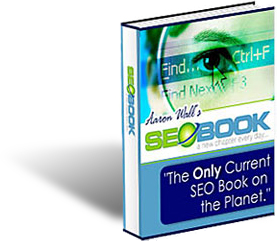Linking Strategies + Link Baiting - SES NY Day Four
If linking is important to search engine ranking (and of course it is), I would expect SES New York to update and improve on those two linking programs, maybe add a new speaker or two for April 12, 2007. In fact it went backward, with Todd Friesen included on the panel in Chicago last year and dropped off the schedule for 2007, while Eric Ward was included both years and could not attend this year - he was replaced by Jim Boykin - who showed a very old powerpoint from a hosting conference he spoke at in 2005 - Ooops!
Both the Linking Strategies session and the Linkbait sessions played to a full house in August of 2006 in San Jose and again in Chicago and again in New York. Seems the line-up doesn't change, (and when it does, the presentations are old news) so the assumption is that linking doesn't change. Here's the Linking Strategies lineup from New York:
- Justilien Gaspard, Internet Marketing Consultant, Justilien Internet Marketing Solutions
- Jim Boykin, CEO, We Build Pages Internet Marketing
- Greg Boser, President, WebGuerrilla LLC
- Chris Boggs, Search Strategist, Avenue A | Razorfish
- Rand Fishkin, CEO, SEOmoz.org
- Jennifer Laycock, Editor-in-Chief, Search Engine Guide
- Cameron Olthuis, Partner, Advantage Consulting Services
NEW beside a session means exactly what it says, and I wish I had resisted the urge to attend the reheated Linking Strategies and Linkbait sessions in favor of the NEW "Content is King" session early morning and skipping the stale Linkbait (nothing "NEW" available in organic SEO tracks at that time). I think I see why Matt Cutts decided to cut out this time and stay home for a visit with the in-laws.
I'd also like to propose that the reheated sessions from last year be marked with a separate "NEW Material" classification - or maybe "NEW - Material - since - August - last - year - if - you -attended - that - show" designation. Well, I'm sure the shows are sprinkled about the country so that locals can attend, but I traveled for a total of 11 hours by plane to attend (and return home) and I wanted to get more out of this. Yes, I know, it's my fault!
So where are we on the state of linking in 2007? Is there anything new to consider, anything else we should know about? Yes. The most recent development is the soaring popularity of Widget Bait this year. This item was discussed by Cameron Olthius in the Linkbait session briefly when he pointed out thatMyBlogLog was acquired by Yahoo for $10 Million after their widget drove the growth of the company.
As an illustration of how the viral marketing industry circles in on itself, the top ranking results in Google for "MyBlogLog Acquired $10 Million" are Digg and Mashable as I do my background research here.
So here's an idea - Build a great new widget and do fantastically successful viral marketing on blogs or other social spaces, you'll get so many links, you'll gain national media attention, then get purchased by a big company. What? It could happen! Note to self - go to sessions marked "NEW" at next SES.
Mike Valentine is an SEO Specialist offering occassional commentary on Search Engine Developments through his Reality SEO Blog and developed WebSite101 Small Business Ecommerce Tutorial in 1999 to help educate the little guy to the intricacies of online business.
Labels: linkbait, linking strategy, links, viral marketing, widget seo




